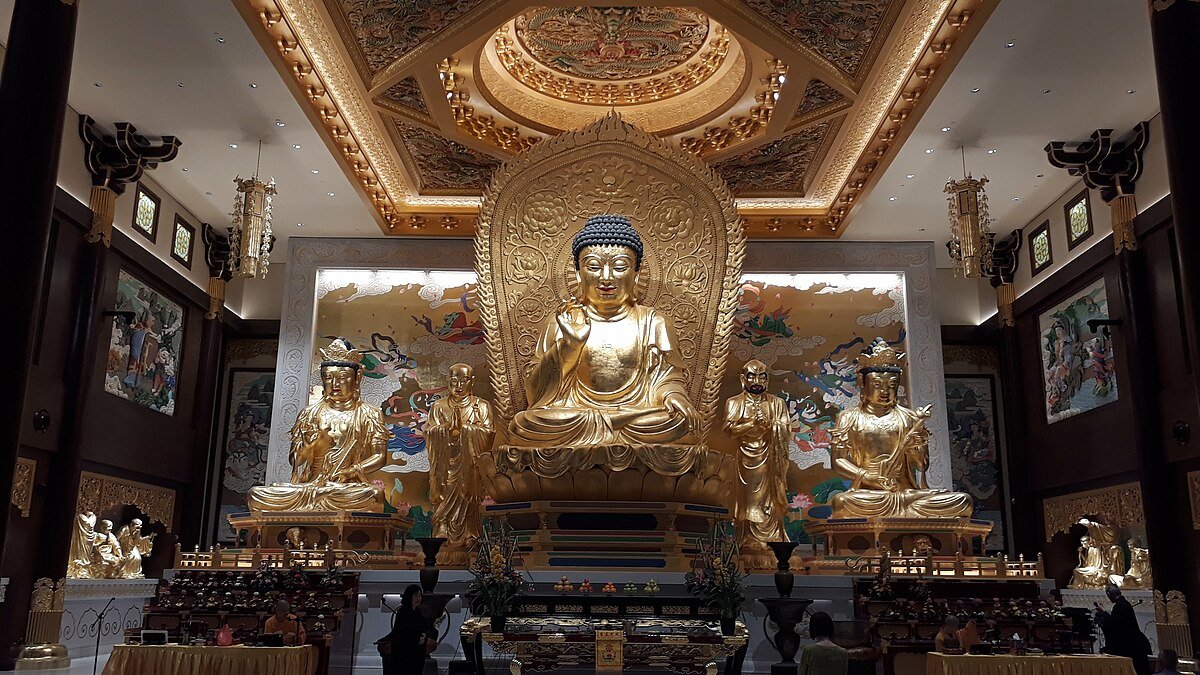What Is Mahāyāna Buddhism?
Mahāyāna Buddhism builds upon the core teachings of the Buddha but introduces new scriptures, philosophies, and practices that reflect a broader spiritual goal. Central to Mahāyāna thought is the ideal of the Bodhisattva a being who, out of great compassion, forgoes final enlightenment to help others attain liberation first.
It encourages devotional practices, deep meditation, philosophical inquiry, and active compassion.
What Is the Goal of Mahāyāna?
The ultimate goal in Mahāyāna Buddhism is not only personal liberation (nirvāṇa) but the enlightenment of all sentient beings. Practitioners take a Bodhisattva vow to delay their own final liberation until all others are freed from suffering.
This goal is pursued through:
The Six Perfections (Pāramitās): generosity, morality, patience, energy, meditation, and wisdom
Deep meditation and insight
Altruistic action and compassion (karuṇā)
Wisdom (prajñā) that understands emptiness (śūnyatā)
The Great Vehicle – Compassion for All Beings
Mahāyāna Buddhism, meaning “The Great Vehicle,” is one of the two major branches of Buddhism. Known for its expansive vision, Mahāyāna emphasizes universal compassion, the Bodhisattva path, and the aspiration to bring all sentient beings to enlightenment, not just oneself.
Originating in India around the 1st century CE, Mahāyāna spread across East Asia, becoming the dominant tradition in China, Japan, Korea, Vietnam, and later influencing regions around the world.
Mahāyāna practitioners engage in diverse spiritual practices across countries and schools. Common elements include:
Devotion to Bodhisattvas like Avalokiteśvara (Guanyin/Kannon), Mañjuśrī, and Kṣitigarbha
Chanting of sutras and mantras, such as the Heart Sutra and Lotus Sutra
Meditation (Zazen, Chan, or Pure Land recitations) depending on the tradition
Compassionate service and acts of kindness as part of the path
Philosophical study, especially Madhyamaka and Yogācāra schools
Mahāyāna includes both monastic and lay communities, with many laypeople actively involved in spiritual life.
Mahāyāna Buddhism is widely practiced across East Asia and beyond:
China: Home to Chan (Zen), Pure Land, and Tiantai traditions
Japan: Famous for Zen, Pure Land (Jōdo), and Nichiren Buddhism
Korea: Combines meditation and devotional practice
Vietnam: Features a blend of Pure Land and Zen
Global communities: Many Mahāyāna centers exist in North America, Europe, and Oceania
Bodhisattva Ideal: A vow to save all beings before attaining full enlightenment
Śūnyatā (Emptiness): All phenomena are interdependent and lack inherent existence
Tathāgatagarbha: The idea that all beings possess the seed or nature of Buddhahood
Skillful Means (Upāya): The Buddha’s teachings adapt to the needs of each individual
Faith and Devotion: Especially in Pure Land and devotional traditions, where trust in Amitābha Buddha plays a key role
Mahāyāna is not a single school but an umbrella for several rich traditions:
Zen/Chan: Emphasizes meditation and direct insight into one’s true nature
Pure Land: Focuses on faith in Amitābha Buddha and rebirth in the Pure Land
Nichiren: Centers around chanting the Lotus Sutra and engaging in social action
Tiantai and Huayan: Philosophical schools highlighting harmony and interdependence
Each tradition offers a unique path while sharing the core Mahāyāna values of compassion, wisdom, and universal liberation.
We Work Together
Lorem ipsum dolor sit amet, consectetur adipiscing elit, sed do eiusmod tempor incididunt ut labore et dolore magna aliqua. Dui vivamus arcu felis bibendum ut tristique et egestas quis.
Become a volunteer
Why Learn About Mahāyāna?
Mahāyāna Buddhism offers a universal, compassionate approach to spirituality. It teaches that we are all connected, and that each person’s enlightenment contributes to the awakening of the whole world.
Whether you are seeking inner peace, deep wisdom, or a path of service, Mahāyāna provides teachings and tools to walk the spiritual path with others, not alone.

